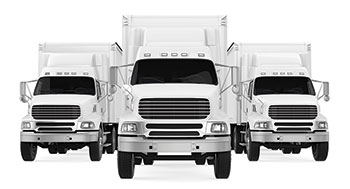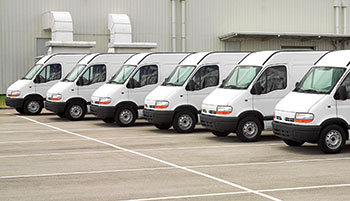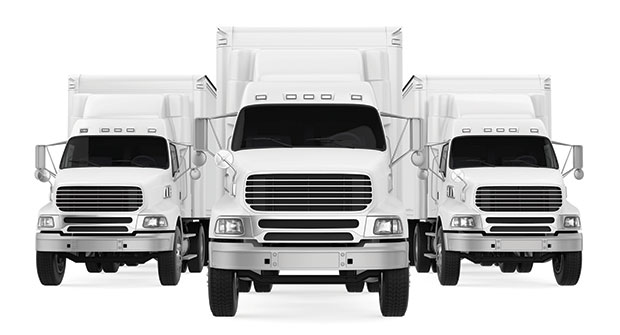
There comes a time in a lawn care company’s life when it’s time to expand the size of its fleet. It’s important, however, to know when is the right time to add that truck or van to the business. Purchasing this equipment comes down to several factors: Do old fleet vehicles need replacing, and is the company growing?
Nate Moses, president of Precision Landscape Management in Greenville, N.C., knew it was time when he saw large amounts of growth in his company.
“We needed to grow our fleet in order to support our growth. We add one to two crews per year, and it is necessary to equip our crews with the right vehicles,” Moses says.
The $2.4 million company has a 90 percent residential and 10 percent commercial customer base and provides 40 percent design build, 30 percent maintenance and 30 percent lawn and shrub care services. Precision was founded about 10 years ago. Moses says it has experienced nothing but growth over the last decade.
“Four years ago, we decided to get serious about growing the company rather than it just being an owner-operator thing,” he says. “We realized we would have to invest in equipment, and we bought used equipment to stay debt-free.”
That used equipment ended up costing the business a lot in repairs, and in order to sustain the growth of the company, Moses realized that he needed to grow the fleet.
According to Moses, the company’s budget has increased for 2020, and it intends to add five vehicles to the fleet this year. There will be one sales car, one small pickup truck, one flatbed truck and two Isuzu cab-over trucks.
When the company adds a truck, van or sales car to its fleet, the intended use is for 10 years, but vehicles can be added to the fleet on an as-needed basis.
Moses says that when making the decision about whether to add a vehicle, LCOs should consider how that vehicle is going to be used.
“Precision believes that it is important to use a uniform fleet as much as possible, but our different divisions need different vehicles. We decide what type to use by looking at its intended daily use, the possibility of needing to be used for other purposes, fuel economy, etc.,” he says.
For example, the company uses Isuzu cab-over trucks and chooses Dodge Ram trucks when it needs a diesel option. For small pickup trucks, the company uses Chevy, and its sales cars are generally Subaru because the brand is environmentally friendly. “Since one of our core values is sustainability, that was a way to align our brand with that.”
Know when you need
There are several factors that can indicate when it is time to expand a fleet.

“Growth of revenue should be one telltale sign, but be sure that it is profitable growth,” Moses says. “You should have benchmarks for what your crews can produce, and when your projected revenue for a year indicates that you will need to add a crew, you should also be planning and budgeting for the tools that each crew needs.”
Moses also says that another indicator that a company may need to add a new vehicle is if the existing vehicles are costing too much to repair. “Multiple four-figure repairs in a year could be a sign that your vehicle isn’t the best fit for your crew. If you are down a vehicle, you are also losing revenue, so you need to ensure that your crews have reliable equipment.”
According to Jeff Smith from Neely Coble, a commercial truck dealership based in Nashville, Tenn., there are a few things to know before adding or replacing a vehicle in a fleet.
Smith cautions LCOs against investing money in a vehicle that they could never get back out of it if they had to sell it. He also says that once a vehicle has fully depreciated and is out of warranty, it is best to replace the vehicle, since owners could end up investing money in repairing that vehicle that they could never recoup.
Smith adds that when a lawn care operator is ready to expand his or her fleet, he or she should be sure to look at the annual mileage for the vehicle.
“This will help answer the question as to whether or not they should go with a gas or a diesel engine,” Smith explains. “In most cases, you will need to drive the vehicle 25,000 miles or more a year to start seeing the payback for the added cost of diesel.”
He also advises that buyers consider how heavy of a gross vehicle weight rating or gross combined weight rating the vehicle might need. This information also might influence what type of drivetrain will be necessary, he adds.
Monique Allen, CEO and creative director at The Garden Continuum in Medfield, Mass., explains that there are three things that indicate it’s time to expand a fleet.
“It’s an amalgam of three tracked factors: debt-to-equity ratio, repair and service cost and crew expansion and development. These factors help us make sound asset expansion and management decisions so we can stay lean and nimble.”
Jacob Cavazos, co-owner of JC3 Lawn and Landscape in Weslaco, Texas, says that this spring, the company plans to add another vehicle to its fleet. Some of the major factors he is considering are overtime and the abundance of work coming into the company.
“All of my crews are busting at the seams with work and average around 45 hours a week,” he says. “We also have been steady with work in our local market and at times, have had to turn work away. We currently have really low debt and are in a good financial position to continue to grow our business in 2020.”
How to buy
When considering adding a vehicle to a fleet, it is also important to consider whether to buy, rent or lease the vehicle.
“As far as lease versus purchase, that is a decision for the accountant to decide and usually comes down to a tax decision,” Smith says. “Leasing can lower your monthly payment and help with cash flow of a startup business, but at some point, the residual is still due; therefore, you must plan for that.”
Smith says pre-owned vehicles are a good option for startup companies, but he adds that owners should ensure they’re purchasing mechanically sound vehicles. He notes that the downside to pre-owned vehicles is the higher interest rate and shorter finance terms.
“If you are purchasing a new vehicle, I highly recommend that you run it for at least two years to overcome the initial depreciation when you drive it off the lot,” he says.
Buying new is the preferred method for Precision Landscape Management. According to Moses, the benefit of cheaper financing allows the company to keep good cash flow, and the warranty that comes with new vehicles is a huge benefit.


